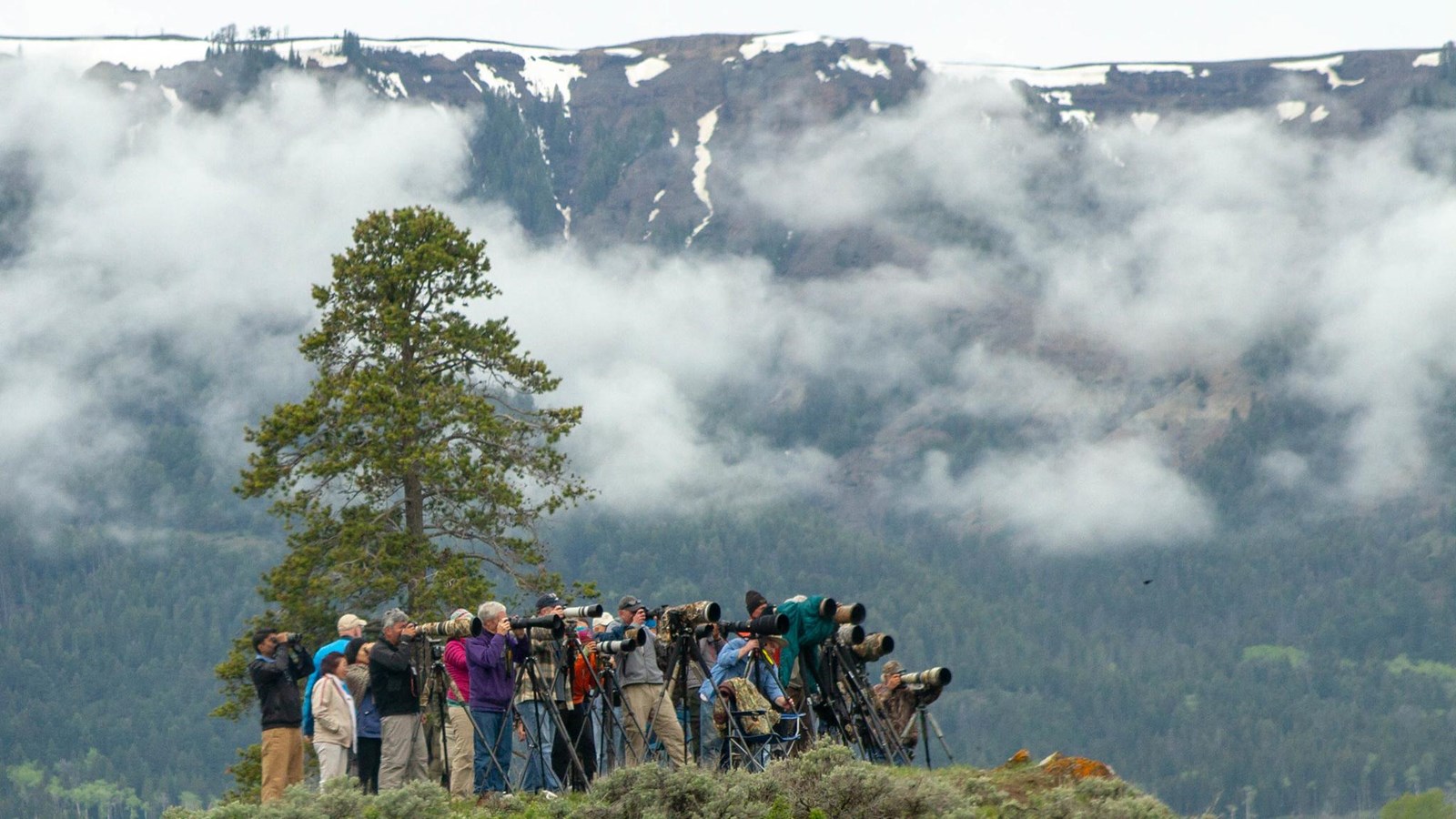Last updated: November 27, 2024
Place
Lamar Valley - Wildlife Watching

NPS / Diane Renkin
Historical/Interpretive Information/Exhibits
Elk, bison, deer, and pronghorn thrive in the grasslands of this area, known as the northern range. In fact, some of the largest wild herds of bison and elk in North America are found here.
The northern range is critical winter habitat for these large animals, which in turn provide food for several packs of wolves. Coyotes are also common, and occasional bobcat, cougar, or red fox are reported.
Leave antlers, wildflowers, rocks, and arrowheads where you find them.
Wild Yellowstone
The reintroduction of the wolf to Yellowstone restored an important element of ecological completeness in the Greater Yellowstone Ecosystem.
This region now contains every large wild mammal, predator or prey, that inhabited it when Europeans first arrived in North America, though not necessarily in the same numbers or distribution. But the wolf is only one factor in the extremely complex and dynamic community of wild Yellowstone.
Life in a Carcass
Since wolves were restored, scientists have discovered layers of complexity reaching far beyond the large mammals. For example, the carcasses of elk, bison, and other large mammals each become ecosystems of their own. Researchers have identified at least 57 species of beetle associated with these ungulate carcasses on the northern range. Only one of those species eats ungulate meat. The rest prey on other small scavengers, especially the larvae of flies and beetles.
Others consume carcass by-products such as microscopic fungal spores. In this very busy neighborhood, thousands of appetites interact until the carcass melts away and everybody moves on.
Wildlife Watching
The northern range of Yellowstone is one of the best places in the world to watch wolves.
Animals are Dangerous
- Do not approach or feed any animal.
- Bison and elk have injured people.
- Stay 100 yards (91 m) from bears and wolves.
- Stay 25 yards (23 m) from all other animals.
You are responsible for your safety.
Think Safety, Act Safely. Yellowstone is a Dangerous Place.
